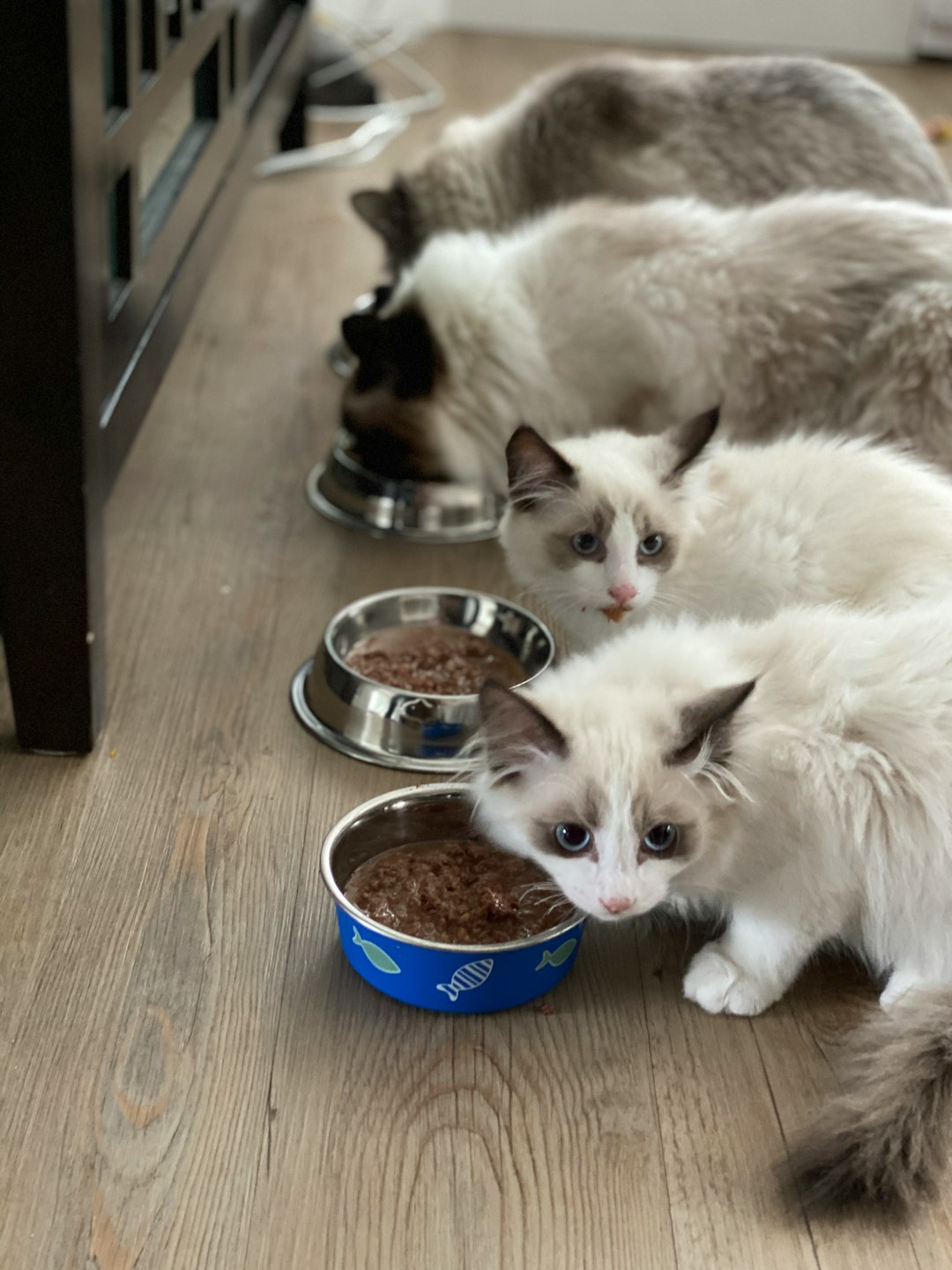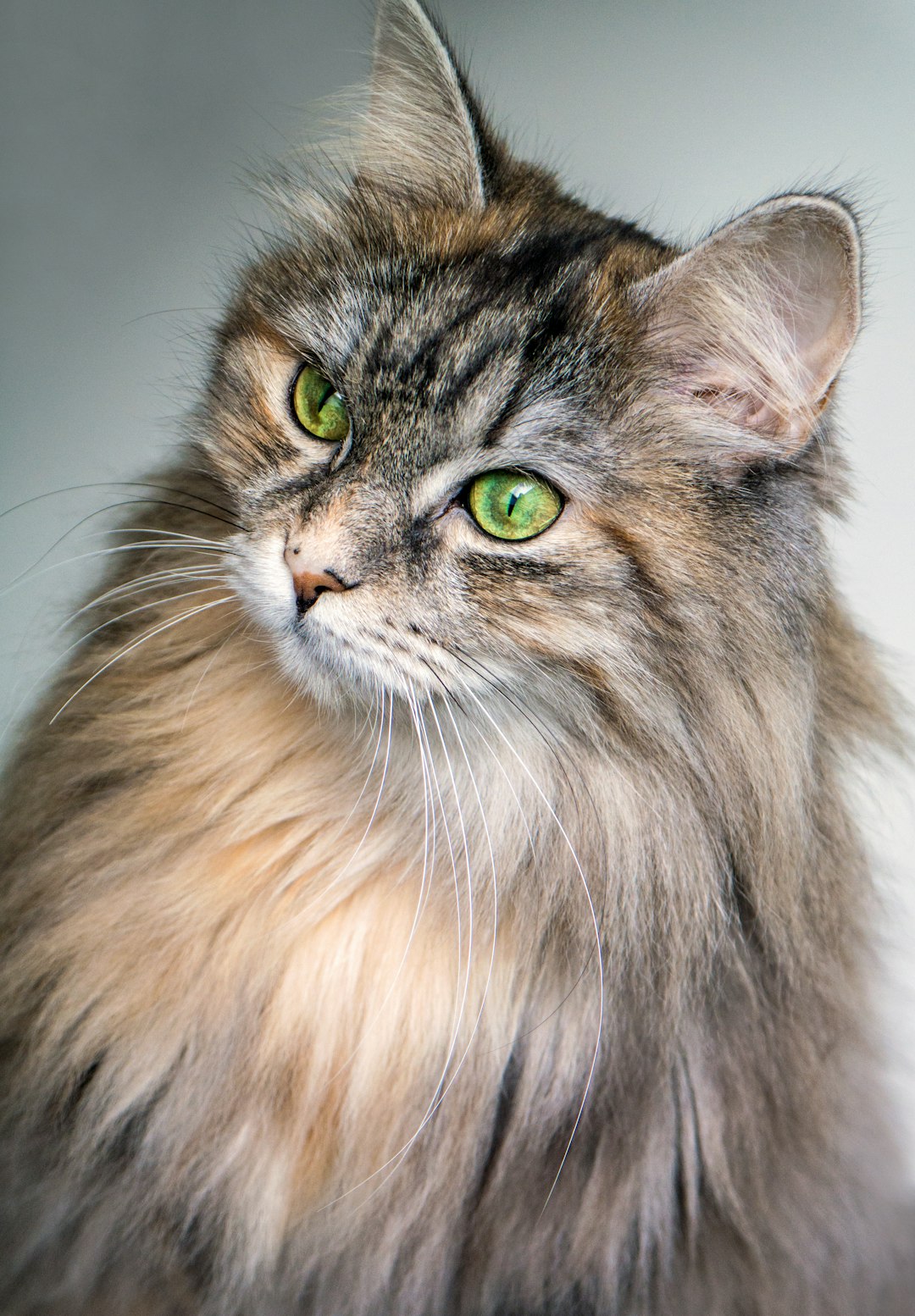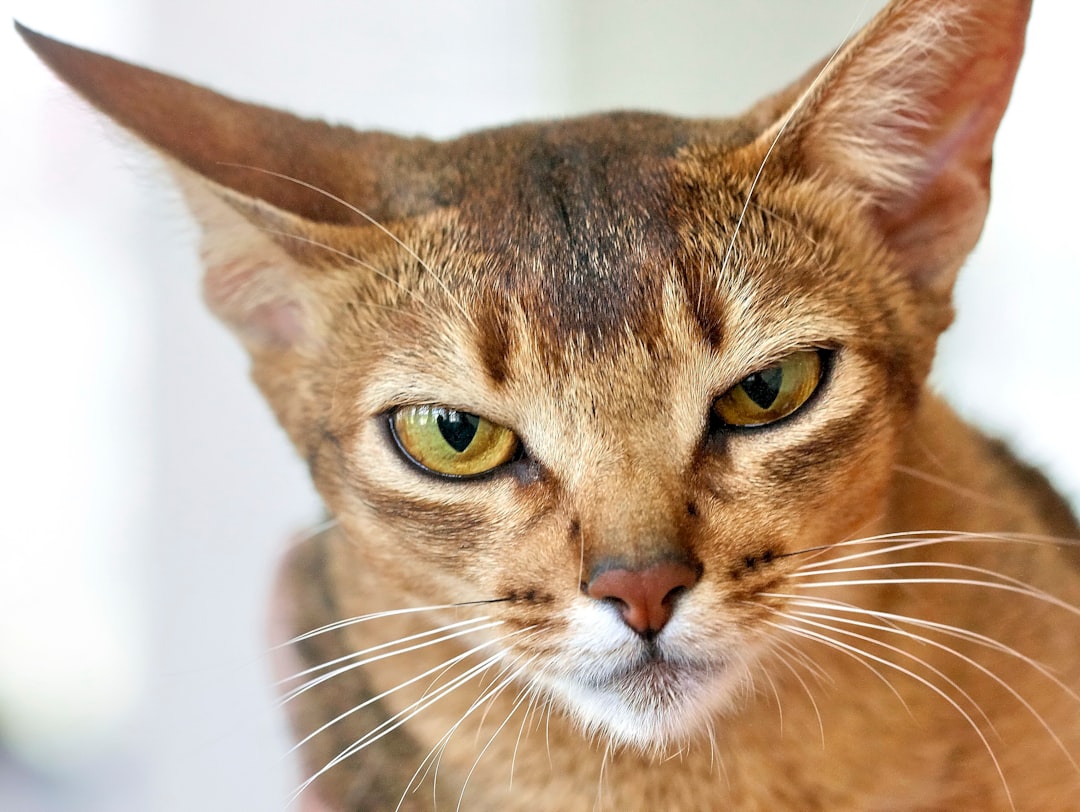Grooming a large cat presents unique challenges—and rewards. Understanding the distinct needs of these affectionate giants is crucial for their health and well-being. Regular grooming not only helps to maintain a clean and healthy coat but also strengthens the bond between you and your furry friend. In this blog post, we will delve into essential techniques that ensure effective cat grooming for large cats, from selecting the right tools to establishing a calming routine. Additionally, we will cover vital aspects such as nail care, ear and eye cleaning, and even dental hygiene, all while being mindful of your cat’s comfort. Let’s embark on a journey to keep our large kitties happy and healthy!
Understanding the Unique Grooming Needs of Large Cats
Why Large Breeds Require Special Attention
Large cat breeds, such as Maine Coons and Ragdolls, often have unique grooming needs that differ significantly from their smaller counterparts. These breeds typically have:
- Thicker fur: Their dense coats require more frequent brushing to prevent matting.
- Longer hair: The longer strands can trap dirt and debris more easily, necessitating a tailored grooming approach.
- Higher vulnerability: Due to their size, they may have mobility issues that can make self-grooming difficult, leading to the need for regular human assistance.
Common Grooming Challenges Faced by Large Cats
While grooming is essential for all felines, large cats face specific challenges that require attention:
- Matting: Without regular grooming, their fur can mat, resulting in skin irritation or infections.
- Overheating: Excessively thick fur can make large cats prone to overheating, especially in warmer climates; adequate grooming helps alleviate this.
- Brushing Resistance: Some large breeds may resist grooming, so knowing how to effectively calm and manage them is crucial.
How Grooming Affects Their Health
Proper grooming for large breeds is not just about aesthetics; it plays a pivotal role in their overall well-being:
- Reduced shedding: Regular brushing helps minimize loose fur in your home and can alleviate allergies.
- Skin health: Grooming removes dirt, debris, and dead skin cells, promoting a healthier coat and skin.
- Bonding time: Grooming sessions can strengthen the bond between you and your large cat, making them more receptive to handling overall.
Understanding these unique grooming needs is vital to ensure the happiness and health of your large feline friend, thereby making cat grooming for large cats an essential routine.
Essential Tools for Effective Cat Grooming for Large Cats
Choosing the Right Brush for Your Cat’s Coat
Selecting the appropriate brush is crucial for maintaining your furry friend’s coat integrity. Large breeds often have unique coats that require specific attention. Here are a few types of brushes to consider:
- Slicker Brushes: Effective for removing mats and tangles, slicker brushes can help smooth out your cat’s fur.
- Bristle Brushes: These are excellent for distributing natural oils, making the coat shinier and healthier.
- De-shedding Tools: Ideal for managing shedding, especially during seasonal changes.
Recommended Grooming Tools for Large Breeds
Equipping yourself with a variety of grooming tools ensures an efficient grooming experience. Here’s a list of must-have products:
- Heavy-duty Comb: Great for detangling fur, particularly for cats with longer coats.
- Grooming Gloves: Ideal for quick touch-ups, these gloves allow you to bond with your cat while removing loose hair.
- Bathtub or Grooming Station: A safe space keeps your feline friend secure during more extensive grooming sessions.
Understanding Grooming Products and Their Uses
Using the right products can make all the difference. Familiarize yourself with these grooming essentials:
- Cat Shampoo: Choose a gentle, pH-balanced shampoo designed for cats to avoid skin irritation.
- Conditioner: A good conditioner can help manage tangles and leaves your cat’s coat soft and manageable.
- Ear Cleaner: Regular cleaning of your cat’s ears prevents buildup and keeps infections at bay.
By investing in the right tools and products, you establish a solid foundation for your large cat’s grooming routine, ensuring they remain healthy and happy.
How to Establish a Regular Grooming Routine
Establishing a regular grooming routine for your large cat is essential to ensure their health and well-being. This structured approach not only helps manage their unique grooming needs but also strengthens the bond between you and your feline friend.
Determining the Frequency of Grooming Sessions
The frequency of grooming sessions largely depends on your cat’s breed, coat type, and lifestyle. Here are some guidelines:
- Short-haired breeds: Typically need grooming every 1-2 weeks.
- Long-haired breeds: Benefit from weekly grooming to prevent mats and tangles.
- Shedding seasons: During spring and fall, increase grooming frequency to manage excess shedding.
Creating a Comfortable Grooming Environment
A soothing environment can make grooming sessions enjoyable for both you and your large cat. Consider the following:
- Choose a quiet space: Select a location free from distractions and loud noises.
- Use a comfortable surface: A soft mat or blanket will help your cat feel secure.
- Keep tools organized: Have all your grooming supplies accessible to avoid unnecessary interruptions.
Using Positive Reinforcement Techniques
Incorporating positive reinforcement during grooming can help reduce stress and make the process smoother. Here’s how:
- Treats: Reward your cat with their favorite treats during and after grooming.
- Praise: Offer verbal encouragement to reinforce good behavior.
- Short sessions: Start with brief grooming sessions and gradually increase their length as your cat becomes more comfortable.
By focusing on these aspects, you can effectively establish a grooming routine that caters specifically to your large cat’s needs and enhances their overall grooming experience. This thoughtful approach ensures that cat grooming for large cats becomes a pleasant routine rather than a chore.
Techniques for Efficient Brushing and De-shedding
Brushing Techniques for Different Coat Types
Grooming a large cat can vary significantly depending on their coat type. Here are some effective brushing techniques:
- Short-haired cats: Use a rubber brush or a grooming mitt. These tools effectively remove loose hair while gently massaging the skin.
- Medium-haired cats: Opt for a slicker brush followed by a comb to detangle any knots effectively.
- Long-haired cats: Start with a wide-toothed comb to tackle tangles, then follow up with a pin brush to smoothen the coat and remove undercoat debris.
De-shedding Tools: What Works Best for Large Cats?
De-shedding is crucial for large breeds since their size can lead to more hair loss. Consider these tools:
- De-shedding brushes: The FURminator is a popular choice, designed to reach beneath the top coat and pull out loose undercoat hairs.
- Undercoat rakes: Great for removing mats and clumps, especially in long-haired cats, preventing future snags.
- Deshedding gloves: Perfect for daily maintenance, these gloves help collect loose hair while providing an enjoyable massage for your cat.
Tips for Reducing Shedding and Matting
To promote a smoother grooming experience, keep the following tips in mind:
- Consistency: Establish a regular grooming schedule, ideally once or twice a week, to manage shedding effectively.
- Diet: Ensure your large cat’s diet is rich in omega fatty acids. This can enhance coat health and reduce excessive shedding.
- Hydration: Adequate water intake promotes skin health, helping to minimize flakiness and shedding.
Incorporating these techniques into your cat grooming for large cats routine will not only keep your kitty looking great but also improve their overall comfort.
Bathing Your Large Cat: When and How to Do It
Bathing your large cat can be a daunting task, but keeping them clean is essential for their health and well-being. Understanding when and how to properly bathe your feline friend can make this experience smoother for both you and your pet.
Signs That Your Cat Needs a Bath
Before grabbing the shampoo, consider these indicators that your large cat might need a bath:
- Filthy Fur: Noticeable dirt, stains or excessive dander or oil buildup.
- Strong Odor: A lingering unpleasant smell despite regular grooming.
- Skin Issues: Itching or irritated skin that could benefit from a gentle wash.
The Best Practices for Bathing Large Breeds
When it’s time to bathe your large cat, follow these practices for a stress-free experience:
- Preparation: Gather all tools—shampoo, towels, and a brush—before starting. Settle on a non-slippery area, such as a bathtub or sink.
- Water Temperature: Use lukewarm water. Too hot or cold can make your cat uncomfortable.
- Gentle Approach: Wet your cat slowly, using a cup or a handheld showerhead to avoid startling them.
Post-Bath Care and Drying Techniques
After the bath, drying your large cat properly is crucial:
- Towel Drying: Start with a towel to remove excess water. Be gentle, especially around sensitive spots.
- Blow Drying: If your cat tolerates it, use a low-heat setting on a blow dryer to further aid drying, keeping a safe distance.
- Check and Brush: Once dry, check for any mats or tangles and brush through gently.
Cat grooming for large cats doesn’t have to be overwhelming. With these techniques, bathing can be a manageable part of your grooming routine.
Nail Care and Claw Maintenance for Large Cats
Why Regular Nail Trimming is Crucial
Maintaining your cat’s nails is not just about aesthetics—it’s an essential part of their overall health and well-being. Regular nail trimming can prevent injuries, promote better posture, and reduce the risk of your feline friend developing a habit of scratching furniture or humans. Here are some key points to consider:
- Prevents Overgrowth: Large cats, due to their weight, can have difficulty managing overly long nails, leading to discomfort.
- Reduces Injuries: Trimmed nails lessen the chance of painful scratches to both your cat and others in the household.
- Aids Foot Health: Regular trimming helps maintain the structure of your cat’s paws, preventing conditions like splaying or abnormal wear.
How to Safely Trim Your Cat’s Nails
Trimming nails may seem intimidating, but with the right approach, it can be a stress-free experience for both you and your pet. Follow these steps:
- Prepare Your Cat: Make sure your cat is calm before starting. Consider using their favorite treats to create a positive association.
- Positioning: Gently hold one paw and extend the claw naturally. Never force it, as this can cause discomfort.
- Identify the Quick: The quick is the pink part within a white nail. Avoid cutting into this area to prevent bleeding and pain.
- Gradual Trimming: Start by trimming just the sharp tip of the claw and gradually progress as your cat becomes accustomed to the process.
Tools for Nail Care: Choosing the Right Clipper
Selecting the right tool for nail care is important for safety and effectiveness. Here are some options to consider:
- Guillotine-style Clippers: These are easy to use for cats, providing a smooth and clean cut.
- Scissor-style Clippers: Great for larger nails, offering precision for those who prefer more control.
- Electric Nail Trimmers: Ideal for those concerned about cutting too close; these can gently sand down nails safely.
When choosing the right clipper, ensure it’s sharp and comfortable to hold, as this will enhance your overall grooming experience. Regular cat grooming for large cats includes diligent nail care, so make it part of your routine for happy and healthy kitties!
Ear and Eye Cleaning: Keeping Your Cat Comfortable
Importance of Regular Ear Cleaning
Maintaining your large cat’s ear health is crucial for their overall well-being. Regular ear cleaning helps to prevent:
- Infections: Moist environments can lead to bacterial or fungal growth.
- Ear Mites: Large cats are just as susceptible as others, and these pests can thrive without proper care.
- Wax Buildup: Excessive wax may cause hearing issues and discomfort.
Cleaning your cat’s ears can also strengthen your bond. When done gently and regularly, it creates a positive grooming experience and keeps your furry friend healthy.
Safe Techniques for Eye Care
Cleaning your cat’s eyes is equally important. Here’s how to ensure comfortable and effective eye care:
- Use a Soft Cloth: Dampen a clean cloth with warm water. Gently wipe away any discharge from around the eyes.
- Be Gentle: Stroke away from the eye to avoid irritation. If your cat resists, try using treats to create a calming environment.
- Monitor for Signs of Issues: Look for excessive tearing, redness, or swelling, as these may indicate underlying conditions.
Your cat will appreciate your gentle touch and attention.
When to Seek Professional Help for Ear and Eye Issues
Although regular maintenance is key, some conditions require a vet’s expertise. Consider professional help if you notice:
- Discharge: Unusual colors or smells can indicate infections.
- Excessive Scratching: If your cat is persistent in scratching their ears or rubbing their eyes, it could signify discomfort or irritation.
- Swelling or Redness: These are clear signs that it’s time for a veterinary assessment.
Keeping your large cat’s ears and eyes clean not only enhances their comfort but also promotes their overall health. Regular checks can catch problems early, ensuring your feline friend remains happy and healthy.
Dental Hygiene: An Often Overlooked Aspect of Cat Grooming
Why Dental Care is Essential for Large Cats
Dental hygiene is crucial for the overall health of your large cat. Many pet parents often underestimate its significance, but poor oral health can lead to serious issues including:
- Gum disease: This infection can cause pain and tooth loss.
- Heart disease: Bacteria from dental issues can enter the bloodstream affecting the heart.
- Kidney problems: Poor oral health can contribute to kidney disease, impacting your cat’s quality of life.
Maintaining your cat’s oral health not only keeps their breath fresh but also ensures they remain happy and healthy.
Methods for Maintaining Your Cat’s Oral Health
To ensure your large cat has excellent dental hygiene, consider the following methods:
- Regular brushing: Aim for at least two to three times a week. Use a cat-specialized toothbrush and toothpaste.
- Dental treats: Provide treats specifically designed to reduce tartar buildup and promote gum health.
- Water additives: These can help reduce plaque and freshen breath simply by being added to your cat’s water bowl.
- Annual vet checks: Regular dental check-ups can catch early signs of dental diseases.
Signs of Dental Problems You Shouldn’t Ignore
Be vigilant for the following signs that may indicate your large cat is experiencing dental issues:
- Bad breath: A strong, unpleasant odor could signal underlying dental problems.
- Difficulty eating: If your cat hesitates to chew or favors certain sides, dental pain may be the culprit.
- Swollen gums: Inflammation or redness around the gums is a strong indicator of potential gum disease.
- Excessive drooling: This can indicate pain or discomfort in the mouth.
Incorporating these dental hygiene tips into your cat grooming for large cats routine is essential for their overall health and happiness.
Recognizing Stress and Anxiety During Grooming
Understanding Your Cat’s Body Language
Understanding your cat’s body language is crucial when it comes to cat grooming for large cats. Cats communicate through their posture, expressions, and vocalizations. Pay close attention to:
- Ears: Flattened ears indicate discomfort or stress.
- Tail Position: A puffed-up tail or one held low can signal anxiety.
- Body Posture: A tense or hunched body often suggests fear or unease.
By learning these signals, you can better understand when it’s time to ease up during grooming.
Signs That Grooming is Causing Stress
Watch for specific signs that may indicate your large cat is feeling stressed during grooming sessions:
- Vocalizations: Excessive meowing or growling.
- Attempting to Escape: If your cat tries to jump off the table or run away, it’s a clear sign of discomfort.
- Aggression: Swatting or biting can indicate your cat feels threatened.
- Heavy Breathing: Rapid breaths can also signify anxiety.
Recognizing these signs early allows you to tailor your approach for a more comfortable experience.
How to Make Grooming a Stress-Free Experience
To ensure that grooming is a positive experience for both you and your large cat, try these helpful strategies:
- Create a Calm Environment: Use soft lighting and minimize noise to reduce anxiety.
- Choose the Right Time: Groom when your cat is relaxed, preferably after playtime or eating.
- Take Breaks: If your cat shows signs of distress, pause and give them a break.
- Use Treats and Praise: Reward your cat with treats and affection to create positive associations with grooming.
By applying these techniques, you can transform grooming from a stressful chore into a bonding experience for your large feline companion.
When to Seek Professional Grooming Services
Signs Your Cat Requires Professional Help
While cat grooming for large cats can often be managed at home, there are certain signs that indicate your furry friend may need professional assistance. Keep an eye out for:
- Severe matting: If your cat has highly tangled fur that you can’t detangle, it’s best to consult a professional.
- Excessive shedding: If you notice unusual amounts of loose hair and you can’t manage it through regular brushing, seek help.
- Skin issues: Redness, irritation, or unusual lumps may require a vet or groomer’s expertise.
- Aggressive behavior: If your cat shows signs of stress or aggression during home grooming, a professional groomer trained in handling large breeds might provide a calmer experience.
Choosing the Right Grooming Parlor for Large Cats
Finding the right grooming service for your large cat is crucial. Consider the following when making your selection:
- Specialization: Look for a groomer experienced with large cat breeds.
- Read reviews: Customer testimonials can give valuable insight into the groomer’s reputation and skill level.
- Visit before committing: A visit can help you assess the cleanliness, safety, and atmosphere of the facility.
- Ask about techniques: Ensure they employ gentle and effective grooming methods tailored for larger felines.
What to Expect During a Professional Grooming Session
A professional grooming session can be a breeze for both you and your cat when adequately prepared. Here’s what to expect:
- Assessment: The groomer will evaluate your cat’s coat and skin right away.
- Grooming Plan: They may create a tailored plan based on your cat’s needs, covering brushing, de-shedding, and any specific treatments.
- Calm Environment: A professional will provide a calm atmosphere, reducing stress for your large kitty during the grooming process.
- Post-Grooming Tips: After the session, you will likely receive advice on maintaining your cat’s grooming needs until the next visit.
Seeking professional grooming services can enhance the health and appearance of your large cat, ensuring their comfort and happiness.
Frequently Asked Questions
How often should I groom my large breed cat?
Large breed cats typically require grooming at least once a week, but this can vary based on their coat type and shedding cycle. Long-haired breeds may benefit from more frequent grooming, ideally every 3-5 days, to prevent matting and hairballs. Regular grooming not only keeps their coat tidy but also allows you to check for skin issues or parasites, promoting their overall health and well-being.
What tools are best for grooming large breed cats?
When grooming large breed cats, it’s essential to have the right tools, such as a slicker brush to remove tangles and loose fur, a wide-toothed comb for detangling, and grooming gloves for a gentle approach. A de-shedding tool can also be beneficial, especially during shedding seasons. Additionally, nail clippers, a soft-bristled brush for face and paws, and pet-safe shampoo for baths are important to maintain your cat’s hygiene and coat health.
Are there any specific grooming techniques for large breed cats?
Yes, grooming large breed cats requires specific techniques to ensure comfort and effectiveness. Start by brushing in the direction of hair growth to avoid pulling on the fur. Use slow, gentle strokes and pay special attention to areas prone to matting, such as the stomach and armpits. For cats that are uncomfortable with grooming, consider using treats and praise to create a positive experience. Regular grooming also helps them become accustomed to the process.
What should I do if my large breed cat is resistant to grooming?
If your large breed cat shows resistance to grooming, it’s crucial to approach the situation with patience and understanding. Start by introducing grooming tools gradually, allowing them to sniff and explore them without pressure. Begin with short grooming sessions, focusing on a few minutes and rewarding them with treats or affection. Over time, increase the duration as they become more comfortable. If they continue to resist, consulting a veterinarian or professional groomer for advice may be beneficial.
How can I prevent my large breed cat from matting?
To prevent matting in large breed cats, regular grooming is key. Aim for weekly sessions, or more often if they have long or thick fur. Additionally, keeping their living environment clean and free of debris can help reduce tangles. Healthy nutrition also plays a role; a balanced diet promotes a healthy coat. If your cat does develop mats, realize that attempting to remove them yourself can be painful for the cat, so it’s often best to consult a professional groomer.



